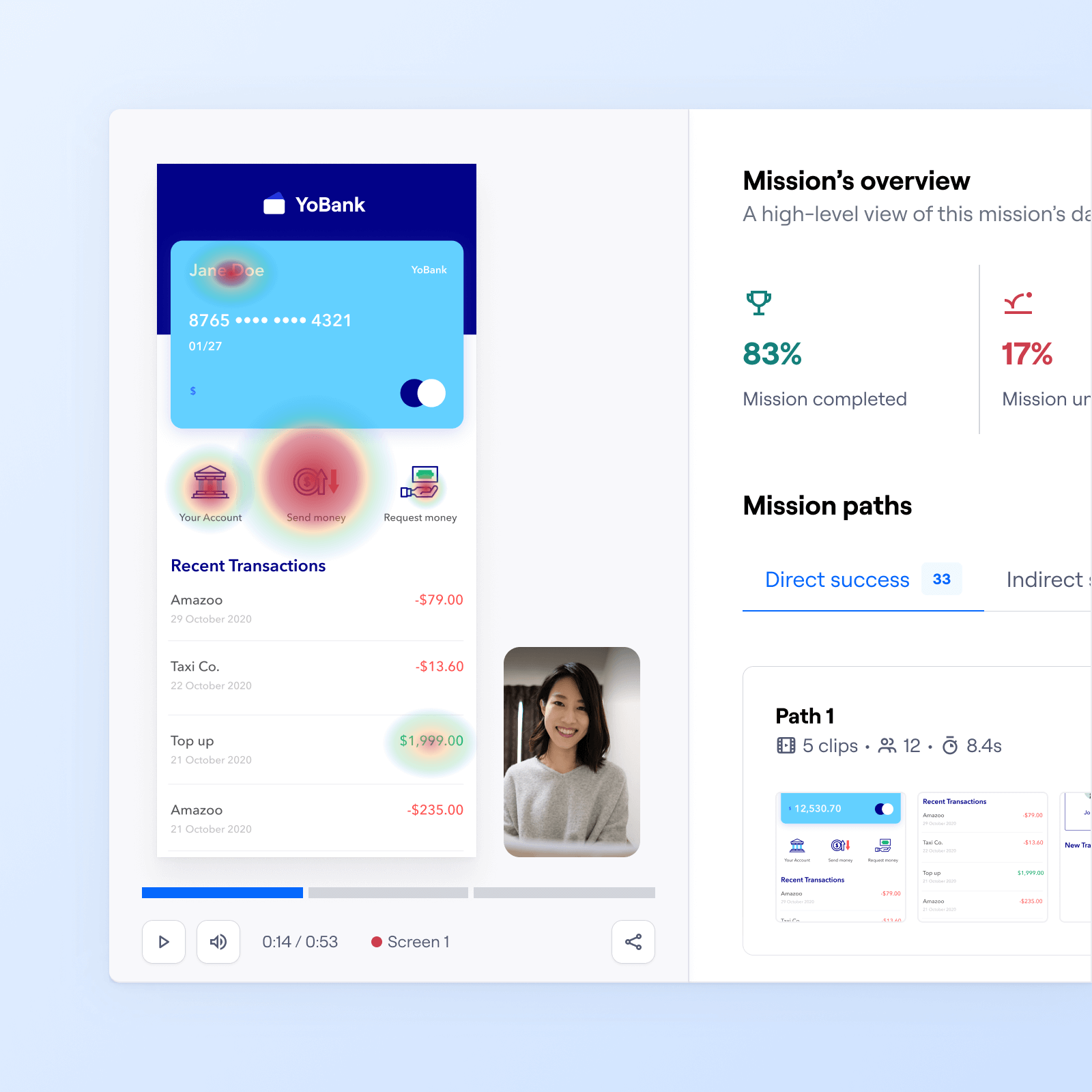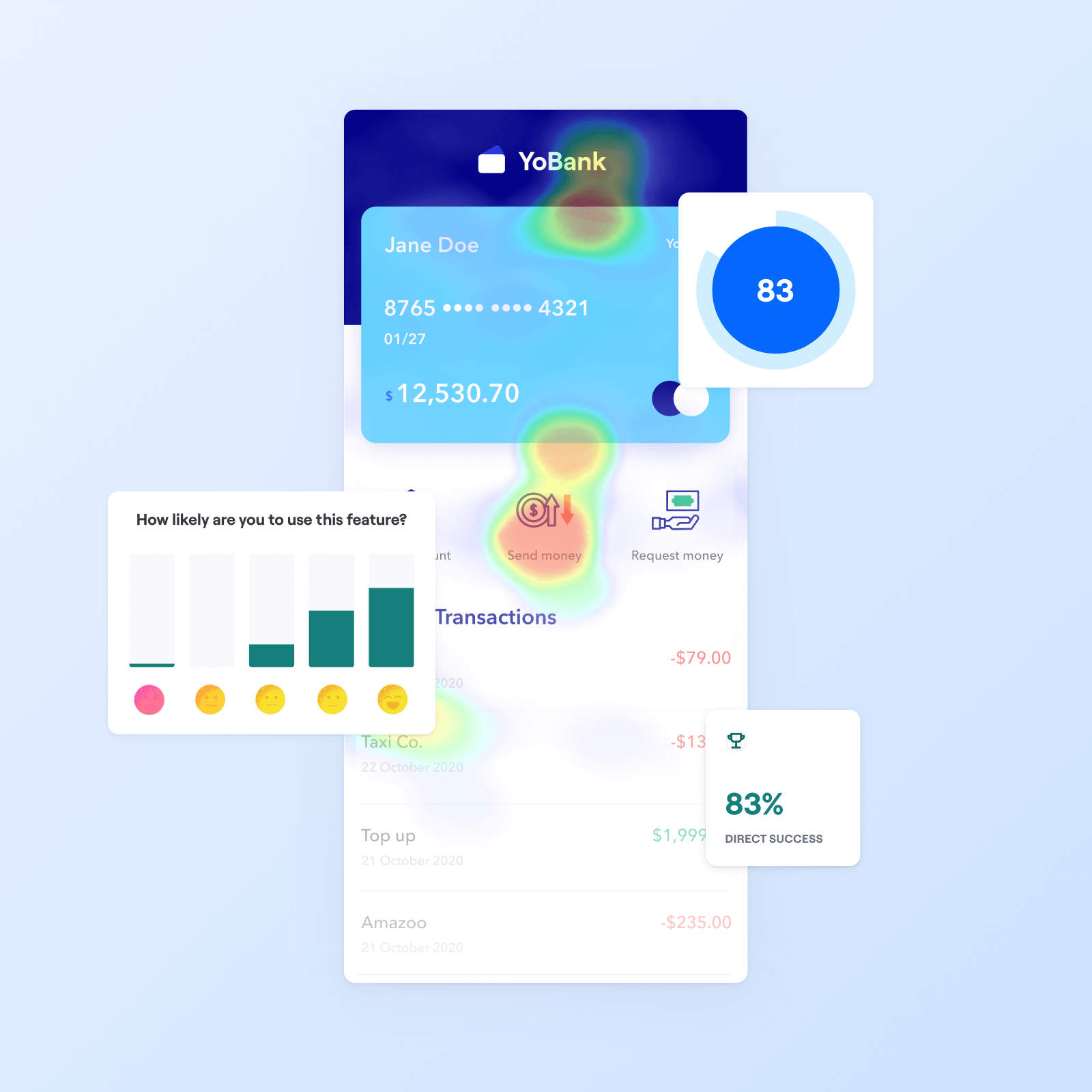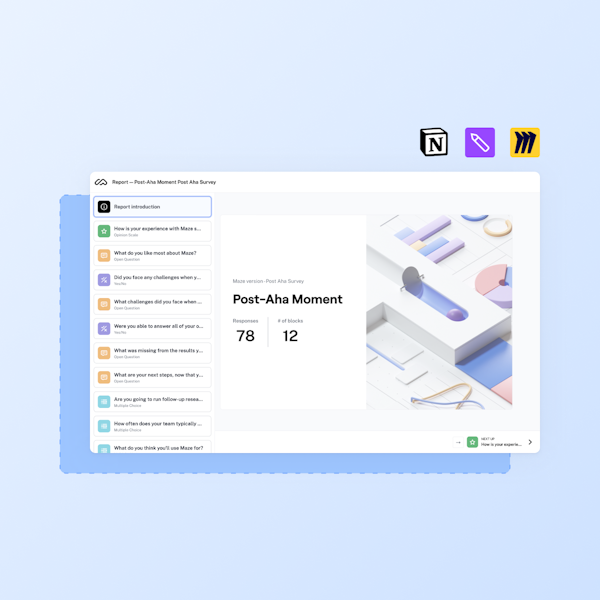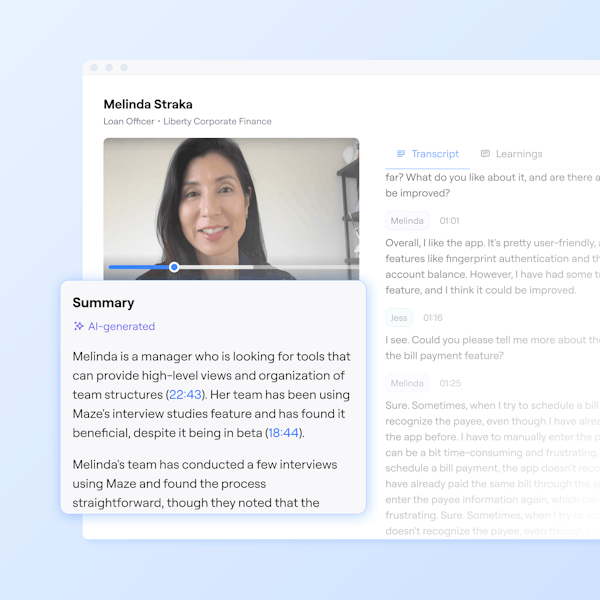The way companies build products is fundamentally broken
For too long, companies have faced a dilemma: learn from users or be fast to market. Limited research bandwidth and maturity results in product teams choosing rapid development above leveraging user insights.
Teams are making critical decisions without crucial user data
Prioritizing speed over user insights often yields disastrous outcomes– failed product launches, developer time consumed by reworking solutions, and costly initiatives disregarding user needs.
And outdated research tools are holding teams back
Stuck with legacy research tools, teams face bottlenecks and slow decisions. These antiquated approaches fail to keep up with the demands of fast-paced product development.

Don’t choose between building fast and building right
Maze is the user research platform that makes product work for people, by making user insights available at the speed of product development.

Get insights in hours, not weeks
Research shouldn’t slow you down. With Maze, teams can create a study in minutes, recruit the right audience, and get rapid insights that drive decisions.

Decisions, not just data
Unlike legacy research tools, Maze does the hard work for you. With AI-powered analysis and reporting, teams can quickly and easily build influence, involve stakeholders, and make informed decisions.

![]()
Using Maze has supercharged our product design process and made it possible to drive faster turnaround times, speeding up product iteration and making for a better, faster user experience.
Yuna Akazawa
Product Designer at Braze
![]()
With Maze, the data was incredibly easy to understand and parse because it was presented visually.
Janet Taylor
Senior Director of Product Design and Research at Homebase
![]()
Using Maze has supercharged our product design process and made it possible to drive faster turnaround times, speeding up product iteration and making for a better, faster user experience.
Yuna Akazawa
Product Designer at Braze
![]()
With Maze, the data was incredibly easy to understand and parse because it was presented visually.
Janet Taylor
Senior Director of Product Design and Research at Homebase



